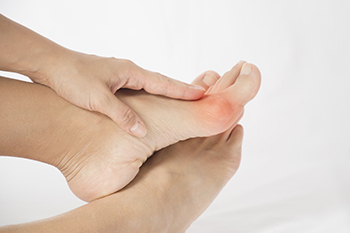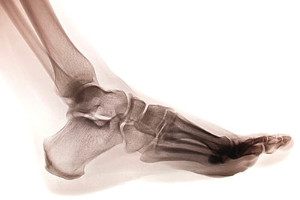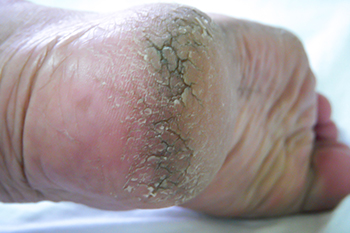
A bunion is a bony lump that forms on the side of the big toe. Bunions can be caused by several things like genetics or from wearing shoes that do not have adequate room for the toes to move freely in. This condition may also develop from a toe injury that caused the bones to misalign. Eventually, a callus may form over the bunion as a result of the bunion constantly rubbing against the inside of the shoes that are worn. Some patients find it beneficial to wear a protective covering over the bunion and many will also purchase larger shoes to accommodate it. Massaging the affected area may aid in keeping the toe flexible and the surrounding tissue soft. An effective massage can be rolling the foot on a tennis ball and performing foot exercises may help to strengthen the muscles in the toes too. It is easier to find shoes that fit properly if they are tried on at the end of the day when the feet are at their largest. If you see the first signs of a small bump developing on the side of the big toe, please consult with a podiatrist who can determine if it is a bunion and what the right treatment is for you.
If you are suffering from bunion pain, contact one of our podiatrists of Foot and Ankle Clinics, PA. Our doctors can provide the care you need to keep you pain-free and on your feet.
What Is a Bunion?
Bunions are painful bony bumps that usually develop on the inside of the foot at the joint of the big toe. As the deformity increases over time, it may become painful to walk and wear shoes. Women are more likely to exacerbate existing bunions since they often wear tight, narrow shoes that shift their toes together. Bunion pain can be relieved by wearing wider shoes with enough room for the toes.
Causes
- Genetics – some people inherit feet that are more prone to bunion development
- Inflammatory Conditions - rheumatoid arthritis and polio may cause bunion development
Symptoms
- Redness and inflammation
- Pain and tenderness
- Callus or corns on the bump
- Restricted motion in the big toe
In order to diagnose your bunion, your podiatrist may ask about your medical history, symptoms, and general health. Your doctor might also order an x-ray to take a closer look at your feet. Nonsurgical treatment options include orthotics, padding, icing, changes in footwear, and medication. If nonsurgical treatments don’t alleviate your bunion pain, surgery may be necessary.
If you have any questions, please feel free to contact our offices located in Woodbury, West St. Paul, and Edina, MN . We offer the newest diagnostic and treatment technologies for all your foot care needs.




